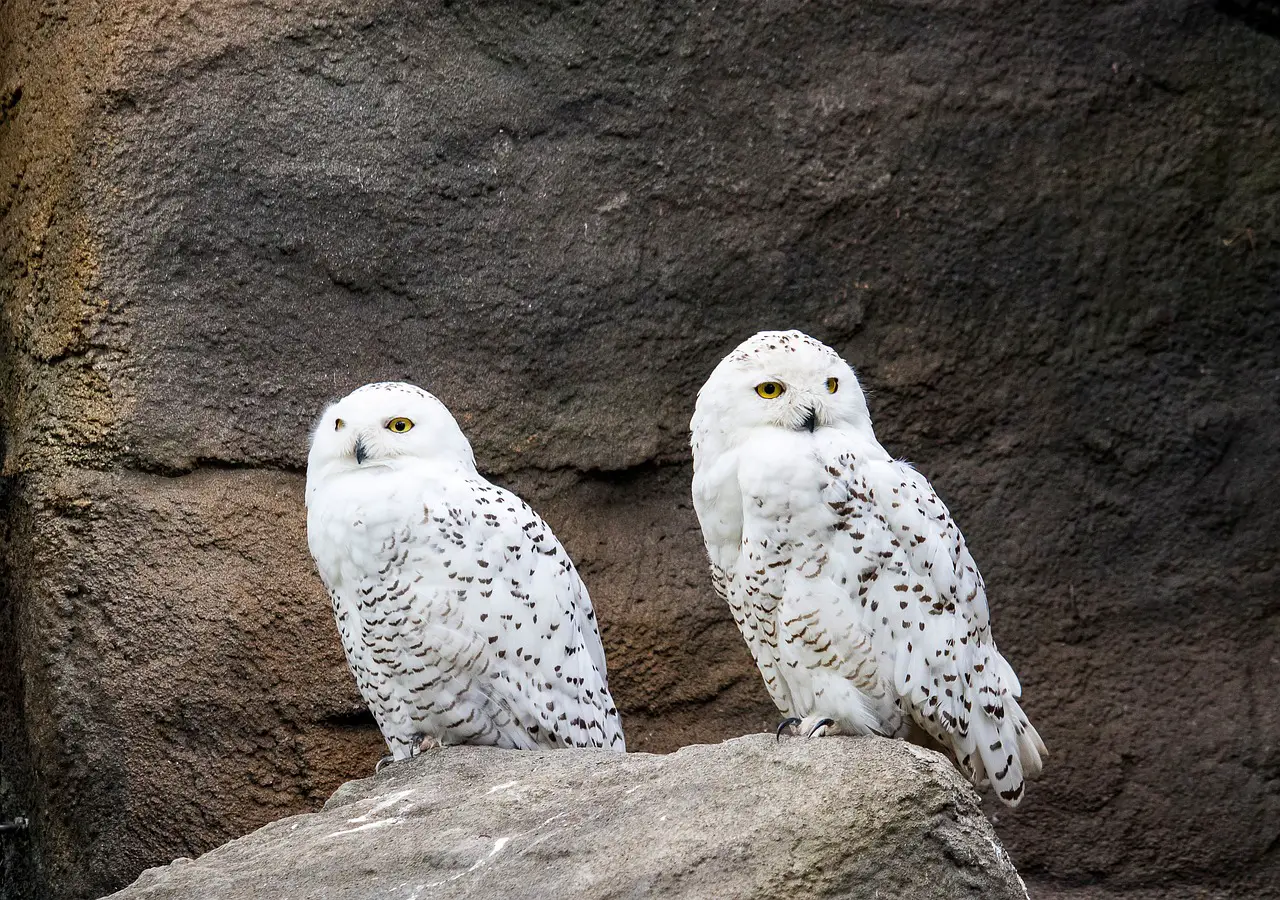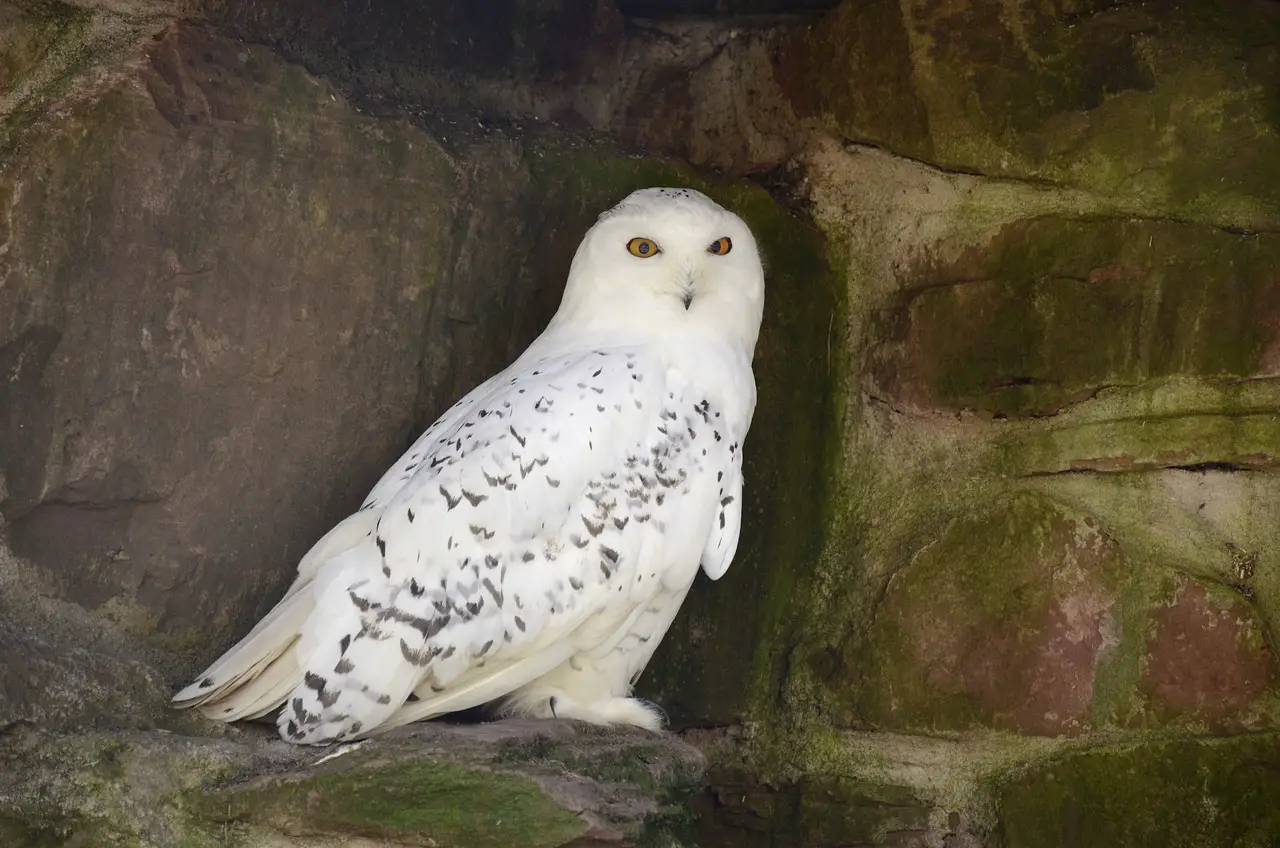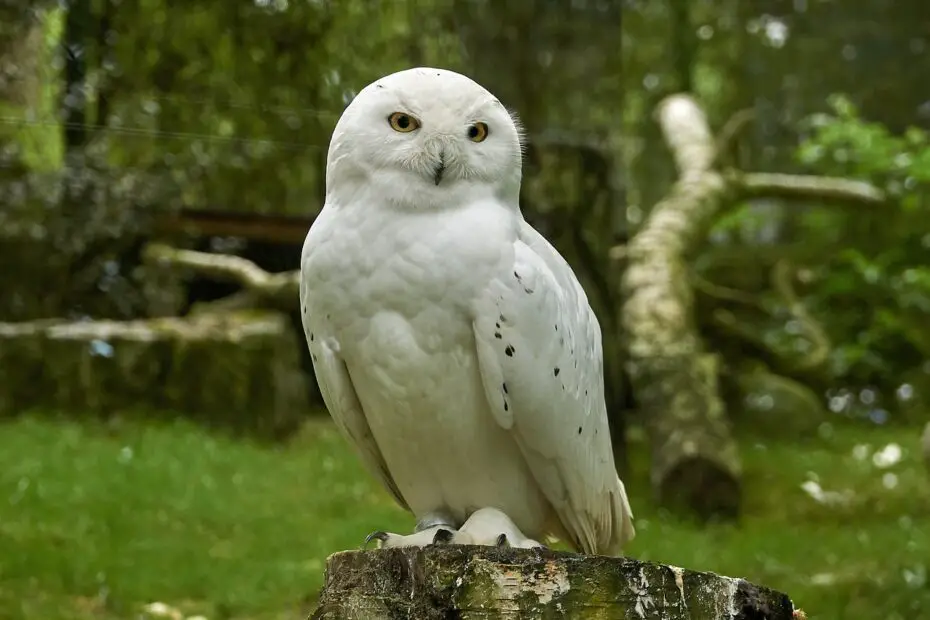White snow owls, with their stunning appearance and silent flight, are truly captivating creatures. These majestic birds, also known as the Arctic owl or the snow owl, have long fascinated both nature enthusiasts and casual observers. In this article, we will explore the fascinating world of white snow owls, including their appearance, behavior, adaptations, diet, threats, cultural significance, and even the possibility of keeping them as pets.
You may also want to read about animals that start with O.
Overview of White Snow Owls
Appearance
White snow owls are known for their distinctive plumage. Their feathers are predominantly white, allowing them to blend seamlessly with their snowy surroundings, making them almost invisible to unsuspecting prey. Additionally, their large, round heads are adorned with bright yellow eyes and a sharp, curved beak. The male snow owls are generally whiter in color than the females, which may have dark speckles or bars on their feathers.
Habitat
These magnificent birds are primarily found in the Arctic regions, including parts of North America, Europe, and Asia. They inhabit tundra and open grasslands, where they can find a sufficient supply of their favorite prey. White snow owls are well-adapted to survive in cold climates, thanks to their thick plumage and unique physical features.
Behavior
White snow owls are generally solitary birds, except during the breeding season. They are known for their silent flight, which allows them to approach their prey undetected. Their acute hearing and exceptional vision make them formidable hunters, able to spot small rodents or birds from great distances. Snow owls are also known to be territorial and will defend their nesting sites vigorously.

The Life Cycle of White Snow Owls
Breeding and Nesting
Breeding among white snow owls typically occurs during the summer months when the Arctic regions experience extended daylight hours. The courtship rituals of these birds are intricate and often involve impressive aerial displays. Once a pair has formed, they will search for a suitable nesting site, often choosing elevated areas such as cliffs or trees.
Incubation and Hatching
After mating, the female snow owl will lay a clutch of eggs, usually ranging from 3 to 8 eggs, depending on the availability of food. The incubation period lasts for approximately 32 to 34 days, during which the female diligently protects the eggs and keeps them warm. The male owl assists by providing food for the female during this critical time.
Development and Fledging
Upon hatching, the chicks are covered in white down feathers, providing insulation against the cold. They are entirely dependent on their parents for food and protection. As the young owls grow, their feathers develop, and they gradually acquire the iconic white plumage. Around 50 to 60 days after hatching, the young owls start to venture out of the nest, practicing their flight and hunting skillsunder the watchful eye of their parents.
Adaptations of White Snow Owls
Camouflage
The white plumage of snow owls serves as a remarkable form of camouflage in their snowy habitat. When perched or resting on the ground, they blend almost seamlessly with the snow, making it difficult for prey or predators to spot them. This adaptation gives them a significant advantage when hunting or evading danger.
Silent Flight
Snow owls possess specialized feathers that reduce turbulence and muffle the sound of their wingbeats. This unique adaptation allows them to fly silently, making them exceptionally stealthy predators. Their silent flight enables them to approach their prey without alerting them, ensuring a higher likelihood of a successful hunt.
Enhanced Hearing
Snow owls have exceptional hearing capabilities. Their facial discs, composed of concentric rings of feathers, act as sound collectors, funneling sound waves into their ears. This adaptation enables them to detect faint sounds, such as the movement of small rodents beneath the snow, even in complete darkness.
Diet and Feeding Habits
White snow owls primarily feed on small mammals, such as lemmings, voles, and mice. They have been known to consume birds and even larger prey, including hares and rabbits. Snow owls are opportunistic hunters and have the ability to adapt their diet to the availability of prey in their habitat. Their sharp beaks and powerful talons make them efficient hunters, capable of catching agile prey both on the ground and in the air.

Threats and Conservation
Climate Change
Climate change poses a significant threat to white snow owls and their habitat. As temperatures rise in the Arctic regions, the snow cover that these owls rely on for camouflage and nesting is diminishing. Changes in the availability of prey species, such as lemmings, also impact the survival of these birds.
Habitat Loss
The loss and fragmentation of Arctic habitats due to human activities, such as infrastructure development and resource extraction, further endanger snow owls. Destruction of their nesting sites and disturbances to their hunting grounds can disrupt their breeding success and overall population.
Human Disturbance
White snow owls are sensitive to human disturbance, particularly during the breeding season. Encroachment into their territories, noise pollution, and disturbance of nesting sites can cause stress and even abandonment of nests. Responsible nature tourism and conservation efforts are crucial to mitigate these threats.
White Snow Owls in Mythology and Culture
White snow owls have captured the imagination of many cultures throughout history. In some indigenous Arctic communities, these owls are revered as symbols of wisdom, strength, and protection. They feature prominently in folklore and mythology, often associated with winter, magic, and spirituality.
White Snow Owls as Pets
While the allure of having a majestic white snow owl as a pet may be tempting, it is essential to consider the ethical and legal implications. In most countries, it is illegal to own a snow owl as a pet without proper permits and licenses. These birds have specific habitat and dietary requirements that are challenging to replicate in a domestic setting. It is crucial to respect the natural habitats of these magnificent creatures and appreciate them from a distance.
Conclusion
White snow owls are remarkable creatures perfectly adapted to their Arctic environment. Their striking appearance, silent flight, and incredible hunting skills make them a captivating species to study and admire. However, the challenges posed by climate change, habitat loss, and human disturbance require urgent conservation efforts to ensure the survival of these majestic birds for future generations to appreciate.
FAQs
1. Are white snow owls endangered?
While white snow owls are not currently classified as endangered, they are facing threats due to climate change and habitat loss. Conservation efforts are necessary to ensure their long-termsurvival.
2. Can white snow owls survive in warmer climates?
White snow owls are adapted to cold Arctic environments and may struggle to survive in warmer climates. They rely on the snowy landscape for camouflage and hunting. Rising temperatures and decreasing snow cover pose significant challenges to their survival.
3. Can white snow owls be trained like other pet birds?
White snow owls are wild animals and not suitable for domestication or training like common pet birds. They have specific natural behaviors and habitat requirements that cannot be easily replicated in a home environment.
4. How far can white snow owls migrate?
White snow owls are known to migrate long distances, sometimes spanning thousands of kilometers, in search of food. Their migration patterns vary depending on the availability of prey in different regions.
5. Are white snow owls social animals?
White snow owls are generally solitary birds, except during the breeding season when they form monogamous pairs. They defend their territories and nests vigorously, but outside of the breeding season, they prefer solitude.
